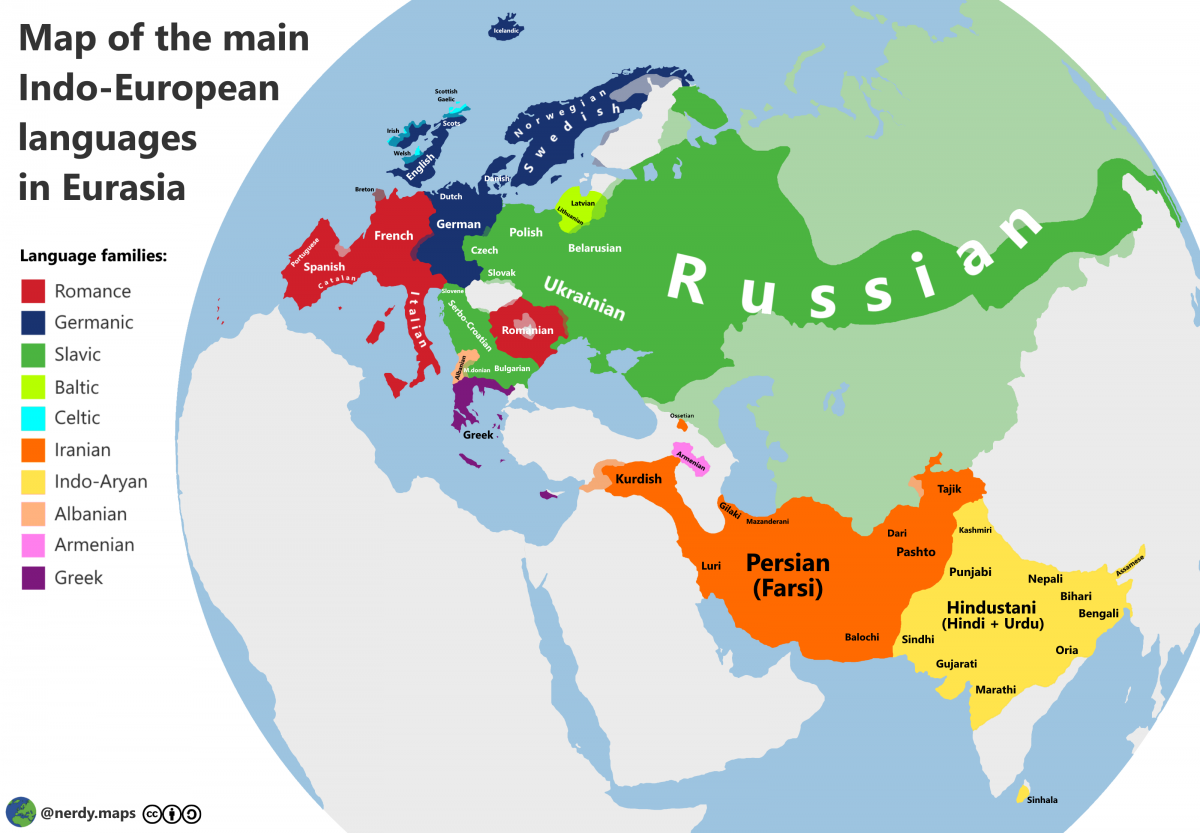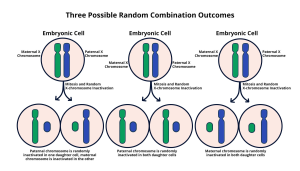Indo-European Languages: Unveiling Their Ancient Origins
Indo-European languages, a vast linguistic family comprising over 400 distinct languages, hold immense significance as they are spoken by more than 40% of the global population today. Recent landmark studies traced their origins to the Caucasus Lower Volga region of modern-day Russia, where speakers of an ancestral tongue lived approximately 6,500 years ago. This groundbreaking research, which combines genetic studies and linguistic analysis, identifies the Yamnaya people as critical figures in the dispersion of these languages throughout Europe and into the Indian subcontinent. The findings not only challenge established narratives but also illuminate the intricate connections within the linguistic family tree of Indo-European languages. As we delve deeper into this fascinating topic, the implications of such discoveries reshape our understanding of language evolution and migration patterns in ancient history.
The family of languages known as Indo-European languages represents a diverse and complex tapestry, encompassing tongues ranging from Latin to Sanskrit. Throughout history, the exploration of this linguistic group has unveiled profound links to human migration and cultural exchange, particularly through the lens of genetic studies. Scholars have long debated the origins of these languages and their speakers, with evidence pointing towards ancient populations residing in the expansive steppes of the Eurasian continent. Recent discoveries surrounding the Yamnaya culture and their ancestral ties to the Caucasus Lower Volga people present exciting new developments in our comprehension of the historical trajectory of these languages. As we navigate this intricate narrative of linguistic evolution, we uncover how language and culture have intertwined across millennia, providing vital insights into our shared human story.
The Origins of Indo-European Languages: Tracing the Ancient Tongue
The origins of Indo-European languages can be traced back to a remarkable group of people known as the Caucasus Lower Volga population. This group of early speakers lived approximately 6,500 years ago in the region corresponding to modern-day Russia. Genetic studies have revealed that they were instrumental in developing a linguistic family tree that eventually branched out into various languages spoken by over 40% of the global population today. Their unique cultural and linguistic traditions laid the foundation for languages such as Latin, Greek, and Sanskrit, which share fundamental similarities, making them a vital focus of linguistic research.
Contrary to earlier assumptions, which suggested that the Yamnaya people were the sole originators of these languages, recent discoveries indicate a more intricate pattern of interaction and migration. This shift has allowed researchers to unveil the complexities of language evolution through a combination of archaeological evidence and modern genetic analyses. As researchers continue to delve into this topic, the understanding of how Indo-European languages proliferated throughout Europe and Asia is becoming clearer, providing insights into cultural exchanges and the dynamics of early human societies.
The Role of the Yamnaya People in Language Dissemination
The Yamnaya people, recognized for their nomadic lifestyle and advanced pastoral practices, played a pivotal role in the dissemination of Indo-European languages across vast regions. Their strategic mobility allowed them to spread not only their linguistic traits but also their agricultural and cultural innovations. These early herders were among the first to utilize horses and wagons, which greatly enhanced their ability to migrate and establish connections with other communities. As they traversed the steppes, they facilitated the exchange of language, traditions, and genetic material, thereby enhancing the cultural tapestry of Europe and beyond.
Understanding the Yamnaya’s significant impact on language proliferation requires an examination of both genetic studies and archaeological findings. Evidence suggests that their interactions with neighboring populations resulted in a blending of languages and dialects, enriching the Indo-European language family. As geneticists like David Reich conclude, the Yamnaya’s migrations marked a profound event in human history, leading to a demographic shift that integrated diverse groups and drastically transformed the linguistic landscape of Eurasia.
Genetic Studies and the Unification of Indo-European Languages
Genetic studies have revolutionized the way researchers understand the origins and spread of Indo-European languages. By analyzing DNA samples from ancient populations, scientists have been able to map out the genetic lineage that underpins linguistic affiliations. These studies have clarified the connections between different language groups, indicating that many languages we recognize today share a common ancestry rooted in the Caucasus Lower Volga people. This genetic evidence serves as a unifying thread that links previously isolated language families, revealing how deeply intertwined our linguistic heritage truly is.
Moreover, the genetic research conducted by teams like those at Harvard supports the steppe hypothesis, which posits that the speakers of proto-Indo-European languages originated from the Eurasian steppes. This hypothesis is strengthened by the genetic markers found in populations across Europe and Asia, underscoring the extensive reach of the Yamnaya and their linguistic descendants. The implications of such studies extend beyond linguistics; they offer a comprehensive view of human movement, cultural exchange, and the mechanisms that have shaped societies over millennia.
Cultural Traditions of the Caucasus Lower Volga People
The Caucasus Lower Volga people were not just linguistically significant; they also contributed rich cultural traditions that influenced subsequent generations. Their burial practices, specifically the construction of kurgans or burial mounds, reflect their social and ritualistic beliefs. These kurgans, distinctive features of the landscape, have fascinated archaeologists and provide crucial insight into the societal structures of these ancient communities. The tradition of burying the dead in elaborate mounds indicates a complex belief system surrounding death and the afterlife, which may have been inherited by the Yamnaya.
Moreover, the shared cultural practices among the Caucasus Lower Volga people and the Yamnaya suggest a continuity of traditions that transcended language itself. These cultural elements played a substantial role in binding communities together, fostering an identity that was distinct yet cohesive. As the Yamnaya migrated and blended with other groups, these traditions likely adapted and evolved, further intertwining language and culture in the development of the diverse Indo-European linguistic landscape we study today.
Linguistic Family Tree: Understanding Indo-European Relationships
The linguistic family tree of the Indo-European languages illustrates the relationships and divergences among various language groups derived from a common ancestor. This tree extends across continents and encompasses a multitude of languages, from the Romance languages like Spanish and Italian to the Slavic languages such as Russian and Polish. The insights garnered from both linguistic analysis and genetic studies reveal how these languages share core vocabulary and grammatical structures, allowing researchers to hypothesize about their common heritage.
Recent findings relating to the Yamnaya and the Caucasus Lower Volga people have bolstered our understanding of this linguistic family tree. By tracing the patterns of migration and genetic mixing, researchers can provide a clearer picture of how these languages developed over time and across geographies. As language continues to change and evolve, the ongoing study of Indo-European languages remains crucial to understanding human history, identity, and the interconnectedness of civilizations.
Unraveling the Genetic Puzzle of Ancient Populations
The quest to understand the origins of Indo-European languages has been supported by groundbreaking advances in genetic research. These studies have unraveled the complexities of ancient populations, revealing how genetics aligns with linguistic affiliations. By comparing DNA from archaeological sites across Russia and Southeastern Europe, scientists have gleaned insights into the migratory patterns and interactions of early speakers. This interdisciplinary approach provides a more comprehensive understanding of how language, culture, and genetics intersect in shaping human history.
As researchers leverage genetic tools to further scrutinize the ancient DNA of populations, new revelations are emerging about the demographic changes that helped spread Indo-European languages. These examinations not only identify the individuals who contributed to the genetic landscape of modern populations but also illuminate the cultural exchanges that accompanied these migrations. Understanding these genetic puzzles sheds light on the dynamic interplay between language and identity throughout human history.
Impact of Warfare on Archaeological Research
Recent geopolitical conflicts have highlighted the fragility of archaeological research and collaboration. The ongoing war in Ukraine has significantly impacted the ability of researchers to engage in collaborative studies focused on the origins of Indo-European languages. The separation of findings resulting from this conflict underscores the importance of international cooperation in furthering our understanding of ancient peoples. Despite such challenges, it emphasizes the necessity for continued efforts to gather and analyze data from various sources.
This disruption has driven researchers to find innovative ways to continue their work. For instance, the collaboration between researchers in Ukraine and Russia has yielded valuable insights, despite the complexities introduced by the war. By sharing genetic data and archaeological findings, the scientific community is still able to piece together the rich tapestry of Indo-European origins, showcasing the resilience of scholarly inquiry even amidst turmoil. This pivot to novel methods of research illustrates the adaptability required in studying ancient civilizations.
The Sociolinguistics of Indo-European Languages
Sociolinguistics plays a fundamental role in understanding the evolution of Indo-European languages. By examining the social contexts in which different languages developed, scholars can uncover how cultural interactions and migrations influenced language change. This perspective allows researchers to consider factors such as trade, social hierarchy, and migration patterns, which all contribute to the development of linguistic features and dialects. The migration of the Yamnaya people, for instance, not only spread language but also fostered cultural ties between disparate groups.
By integrating sociolinguistic concepts with genetic and archaeological data, researchers can paint a fuller picture of how languages interact and evolve over generations. The incorporation of social dynamics into linguistic studies enriches our understanding of the historical processes driving language change and ensures that the narrative of Indo-European languages accounts for the human experiences behind them. Such interdisciplinary research efforts highlight the significance of language as both a tool of communication and a vessel of cultural identity.
Preserving Linguistic Heritage: Challenges and Opportunities
As the study of Indo-European languages continues to evolve, so too does the challenge of preserving linguistic heritage. Many languages within the Indo-European family face endangerment due to globalization and shifts in population dynamics. Efforts to document and revitalize these languages are crucial in maintaining the diversity of human communication. The historical insights gained from studying these languages provide a rich understanding of our shared ancestry and humanity, which underscores the need for active preservation initiatives.
Research initiatives focusing on both genetic analysis and linguistic documentation are vital for safeguarding the future of these languages. Collaborations among linguists, geneticists, and cultural anthropologists can generate innovative strategies for revitalization and education. By promoting awareness and appreciation for the intricacies of the Indo-European linguistic family, we can ensure that the languages not only survive but continue to thrive, reflecting the diverse tapestry of human civilization.
Frequently Asked Questions
What is the origin of Indo-European languages and how are the Caucasus Lower Volga people related?
The origin of Indo-European languages can be traced back to the Caucasus Lower Volga people, who lived in what is now Russia about 6,500 years ago. Recent genetic studies indicate that these populations were among the first speakers of the ancestor tongue, from which over 400 modern languages evolved.
How do genetic studies enhance our understanding of the Indo-European languages?
Genetic studies provide vital evidence regarding the migration patterns of the Yamnaya people and their role in spreading Indo-European languages across Europe and beyond. By analyzing ancient DNA from archaeological sites, researchers have linked contemporary Europeans and populations in the Indian subcontinent to these early Indo-European speakers.
What role did the Yamnaya people play in the development of the Indo-European language family?
The Yamnaya people, who thrived in the Eurasian steppe around 5,000 years ago, are considered instrumental in the dispersion of Indo-European languages. Their innovative pastoralist culture and the use of horseback riding allowed them to expand their influence over vast distances, facilitating the spread of their language.
Why are genetic studies important for understanding the linguistic family tree of Indo-European languages?
Genetic studies are crucial for unraveling the linguistic family tree as they complement linguistic analyses and archaeological findings. They reveal patterns of migration and intermixing among ancient populations, shedding light on how languages evolved and spread over time, particularly during the era of the Yamnaya.
What is the connection between the Anatolian languages and the Indo-European language family?
Anatolian languages represent an early branch of the Indo-European language family, believed to have split from proto-Indo-European. Despite their linguistic ties, genetic studies indicate that speakers of these languages, like the Hittites, did not descend from the Yamnaya and instead likely had earlier connections to a different origin of Indo-European languages.
How did the discovery of the Caucasus Lower Volga people impact the understanding of Indo-European languages?
The discovery of the Caucasus Lower Volga people provides a genetic framework that unifies the diverse branches of Indo-European languages. This breakthrough connects the linguistic puzzle by linking the Yamnaya and Anatolian regions genetically, enriching our understanding of how these languages developed and dispersed historically.
What evidence supports the hypothesis that the Yamnaya people were key to spreading Indo-European languages?
The evidence supporting the Yamnaya’s role includes ancient DNA analyses showing their ancestry spread across Europe and into Asia, as well as archaeological findings that illustrate their mobility and cultural practices, including the burial traditions that have preserved their genomic legacy.
How did the interaction of the Caucasus Lower Volga people with other groups influence the Indo-European languages?
The interaction between the Caucasus Lower Volga people and neighboring populations led to genetic mixing that shaped the Yamnaya genome. This melding of cultures and languages significantly contributed to the evolution and diversity of the Indo-European languages as they spread to different territories.
What challenges have researchers faced in studying the origins of Indo-European languages during recent conflicts?
Recent conflicts, notably the Russia-Ukraine war, have hindered collaborative research efforts among scholars from affected regions. This has impacted the ability to co-author studies and gather comprehensive genetic data, complicating the investigation into the origins of Indo-European languages.
What does the future hold for the research on Indo-European languages and their origins?
The future of research on Indo-European languages includes further genetic studies, archaeological excavations, and linguistic analyses to deepen our understanding of their evolution. Advancements in ancient DNA technology will likely continue to reveal insights into the complex history of language spread and development.
| Key Points | Details |
|---|---|
| Origin of Indo-European Languages | Identified originators are the Caucasus Lower Volga people, located in present-day Russia about 6,500 years ago. |
| DNA Evidence | Research provides genetic evidence of ancestry linking present populations to ancient languages and peoples like the Yamnaya. |
| Significance of Research | Studies help trace the origins of over 400 languages spoken by 40% of the world’s population, providing insight into their evolutionary history and spread. |
| Role of the Yamnaya | The Yamnaya people were significant in spreading Proto-Indo-European languages across Europe and beyond. |
| Future Research Impact | Current geopolitical issues have complicated collaborative research between Ukrainian and Russian scholars, affecting further studies. |
| Cultural Practices | The Yamnaya people shared burial customs with their ancestors, indicating cultural continuity through kurgan tombs. |
Summary
Indo-European languages, spoken by a significant portion of the global population, trace their origins back to the Caucasus Lower Volga people in Russia, marking a pivotal moment in linguistic and genetic history. This groundbreaking research not only uncovers the historical roots of these languages but also reflects the intertwined nature of language and culture across thousands of years. The insights gained from combining linguistic, archaeological, and genetic data strengthen our understanding of how ancient peoples and their languages have shaped modern societies.



